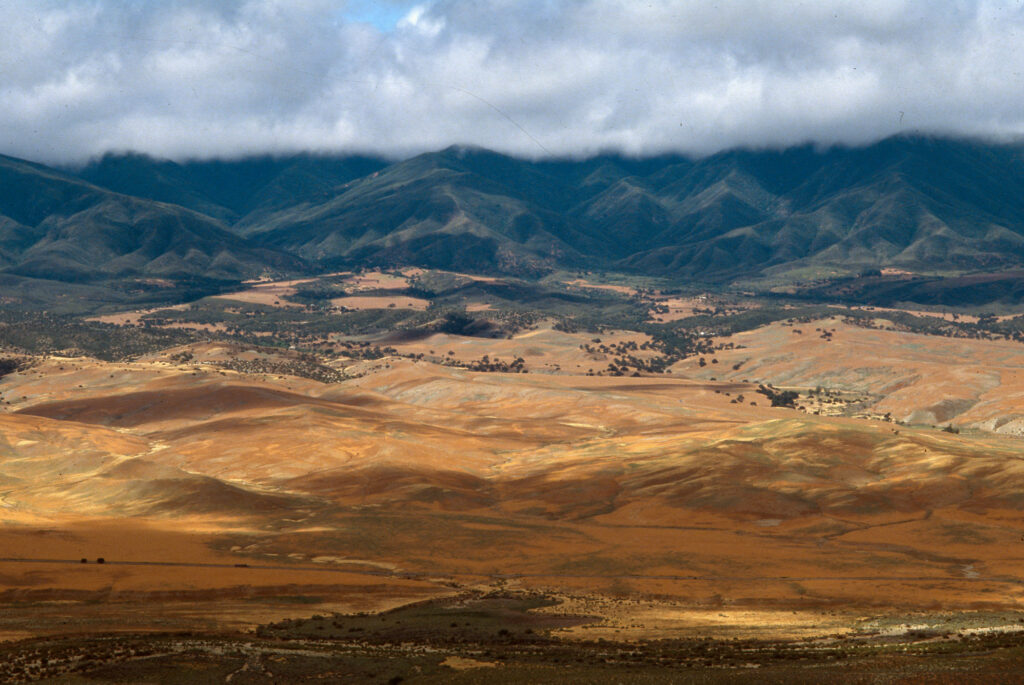Santa Barbara Botanic Garden Receives $818,000 Grant from USDA for “Plant with Purpose” Conservation Outreach in Cuyama Valley
3-Year “Equity in Conservation Outreach Cooperative Agreement” Partners with Local Groups, Small Farmers, and Ranchers to Develop Conservation Practices; Also Funds Demonstration Native Plant Gardens, Paid Teen Internships, and K-8 Curricula

Santa Barbara, Calif. April 17, 2024 – Santa Barbara Botanic Garden will provide conservation outreach, education, and science assistance to small farmers in the Cuyama Valley as part of a $818,000 grant from the U.S. Department of Agriculture (USDA). The three-year Equity in Conservation Outreach Cooperative Agreement (Equity Agreement) develops climate-smart conservation practices in the Cuyama Valley that conserve soil and water and benefit agricultural productivity by creating diverse native habitats.
The Cuyama Valley, situated in northern Santa Barbara County, is a high-desert, hyper-rural farming community that is solely reliant on groundwater for all water uses. Over many decades, the rate of groundwater withdrawals has significantly exceeded the rate of replenishment, resulting in a continual decline in groundwater levels. Along with other agricultural lands across the state, the Cuyama Basin will be required to comply with the California Sustainable Groundwater Management Act and bring the basin into balance. The act requires pumpers to reduce groundwater use, which will likely lead to fallowing land. Fallowing is a farming technique where agricultural land is left unplanted, in this case to reduce demand on the aquifer so that the basin can reach sustainability in compliance with the law.
“This grant is a wonderful opportunity to implement beneficial conservation measures and prevent the spread of invasive weeds on fallowed land in Cuyama,” said Denise Knapp, Ph.D., the Garden’s director of conservation and research. “Together with our partners, we’ll be rallying the community in a bunch of other ways to really spread the word about the power of native plants in a variety of landscapes.”
The Garden’s project establishes a network of small farmers to help them access conservation practices and programs, creates six demonstration sites to showcase the benefits of native plants, offers a paid Cuyama Conservation Internship Program for six grade 11 students, and develops conservation curricula for K-8 students. The Garden will partner with Cuyama-based Quail Springs Permaculture and Cuyama Valley Family Resource Center to implement the project with local input and expertise.
The USDA is investing $70 million in partnerships to improve outreach to underserved producers and communities to expand access to conservation assistance and career opportunities. The Garden’s Cuyama project is among 139 Equity Grants announced by the USDA’s Natural Resources Conservation Service (NRCS) aimed to encourage participation in NRCS programs, especially in underserved communities and among urban and small-scale producers.
###
About Quail Springs Permaculture: Founded in 2004, Quail Springs is a leading educational non-profit that sits on a 450-acre permaculture demonstration site on the traditional homelands of the Chumash people in Cuyama Valley, California. Quail Springs envisions an equitable global community that shares the bounty of this living planet and the responsibility to tend to its health. They continue to pursue their mission to practice, teach, and cultivate ecological and social resilience. Visit www.quailsprings.org/.
About Cuyama Valley Family Resource Center: Located in a beautiful high-desert valley in the northeastern corner of Santa Barbara County, the Cuyama Valley Family Resource Center is a hub of community activity, empowerment and assistance for all Cuyama residents of all ages, cultures, and backgrounds. In addition to providing social services on behalf of Santa Barbara County Department of Social Services and First5, the CVFRC offers a wide variety of programs to support individual, family and community development. Visit www.cvfrc.org.
 Donate
Donate